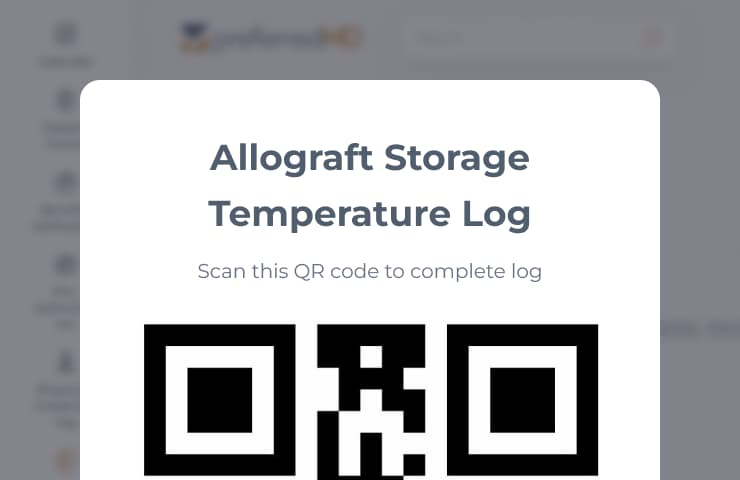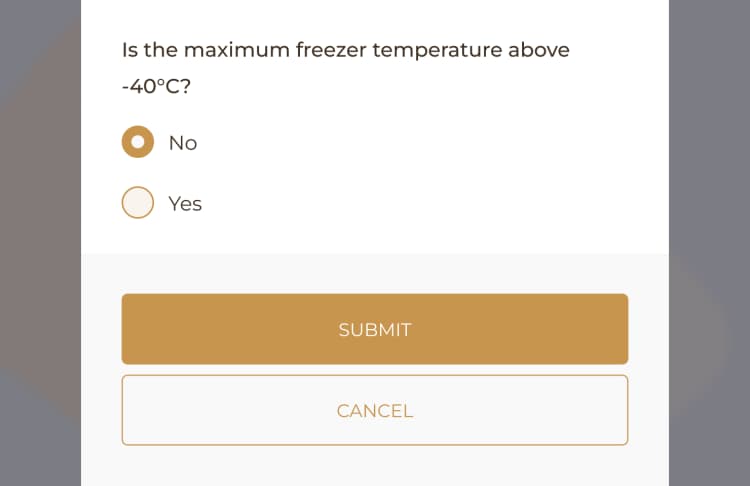Fire Alarm System Inspection Log


How it works


Frequently asked questions
To carry out the Fire Alarm System Inspection (Semi-Annual), please access the inspection log using the QR code provided or by navigating to the Facility Documents section on PreferredMD. Follow the detailed checklist provided in the log template to conduct the inspection, and make sure to document all your observations and findings directly in the log.
To edit the Fire Alarm System Inspection (Semi-Annual) Log on a smartphone, follow these steps: Open the PreferredMD app on your smartphone, navigate to the Facility Documents section, locate the specific log for the Fire Alarm System Inspection, and then make the necessary changes directly within the document.
To perform the inspection on an Android device, start by launching the PreferredMD on your native browser. Then, locate the Fire Alarm System Inspection (Semi-Annual) log template within the app. Follow the provided guidelines to conduct a thorough inspection, and input the findings into the designated fields within the template.
The Fire Alarm System Inspection (Semi-Annual) is an important requirement to ensure compliance with safety regulations. Typically, this task is carried out by a certified fire safety professional or a facility manager. This inspection involves a thorough assessment of the fire alarm system to verify its proper functioning and adherence to safety standards.
Facilities equipped with fire alarm systems must undergo a thorough semi-annual inspection to verify the proper functioning of the systems and to adhere to safety regulations.
The Fire Alarm System Inspection (Semi-Annual) is an essential safety procedure that is typically conducted twice a year. This inspection is usually carried out by a certified fire safety inspector or a designated staff member who is authorized by the facility to ensure that the fire alarm system is in proper working condition and compliant with safety regulations. During the inspection, various components of the fire alarm system, such as control panels, smoke detectors, heat detectors, alarms, and emergency lighting, are thoroughly checked for functionality and any signs of wear or damage. Regular maintenance and inspection of the fire alarm system are crucial for ensuring the safety and security of the building and its occupants.
The bi-annual inspectio for Fire Alarm Systems is a crucial process that entails a detailed examination of a facility's fire alarm system to verify its operational functionality and safety measures. This inspection is conducted to ensure compliance with regulatory standards and to identify any potential issues that may compromise the system's effectiveness.
The Fire Alarm System Inspection Log report must contain the following details: the date of the inspection, the name of the inspector, a comprehensive assessment of the system's condition, a thorough description of any identified issues, and a summary of the corrective measures implemented to resolve these issues.
Penalties for late completion may include financial fines, official non-compliance notices, or heightened inspection and oversight from regulatory authorities, in accordance with the specific regulations and laws applicable to the situation.
The specific deadline for completion of the Fire Alarm System Inspection can vary depending on the regulations, but generally, the inspection should be completed within six months of the date of the last inspection to ensure compliance with the requirements.
The primary objective of regularly checking the Fire Alarm System is to confirm that it is fully operational and capable of effectively detecting and alerting occupants in the event of a fire. This is essential for safeguarding lives and property by ensuring timely evacuation and response to fire emergencies.
A data logger for Fire Alarm System Inspection is an electronic device designed to automatically record and store data over time from a fire alarm system. This data can include information such as temperature, smoke levels, and system status, and is crucial for ensuring the consistent performance of the fire alarm system. During inspections, the stored data can be reviewed to assess the system's functionality and identify any potential issues.
The checklist for ensuring the proper functioning of a Fire Alarm System Inspection usually involves several important steps. These steps may include testing the alarm signals to make sure they are working effectively, checking the battery backups to ensure they are fully charged and functional, inspecting the wiring for any signs of wear or damage, and verifying that the system is able to communicate with monitoring services as intended.
Please make sure to adhere to the precise guidelines outlined by the manufacturer of the Fire Alarm System Inspection. It is crucial to familiarize yourself with the local fire safety regulations and ensure that all components undergo regular inspection, testing, and maintenance in accordance with the recommended schedule. This includes checking the functionality of the alarm system, ensuring that all sensors are operational, and replacing any faulty components promptly. Additionally, it is important to keep records of all maintenance and testing activities for future reference.
Necessary equipment for conducting Fire Alarm System Inspections may include testing devices for alarm signals to ensure they are functioning properly, battery testers to check the condition of batteries, multimeters for conducting thorough wiring inspections, and a data logger for recording and analyzing performance data over time.
You can complete the Fire Alarm System Inspection template by visiting the PreferredMD website or using the PreferredMD app, which can be accessed on a computer, tablet, or smartphone.
You can edit the Fire Alarm System Inspection log on an Android device using the PreferredMD app. This feature allows you to make necessary updates to the document as and when required.
Regular inspections play a critical role in maintaining the functionality of the Fire Alarm System Inspection. It is essential to ensure that the system is fully operational to guarantee the safety of the building occupants and to comply with safety regulations. These inspections involve a thorough check of all components, including detectors, control panels, and alarm devices, to identify any potential issues and ensure prompt maintenance or repairs. Regular inspections also help in verifying that the fire alarm system is in compliance with local safety codes and standards.
Fire Alarm System Inspections (Semi-Annual) should be carried out every six months to verify the system's reliability and ensure compliance with fire safety standards. This includes checking all components, such as alarms, sprinklers, and emergency exits, to guarantee they are in proper working condition and meet all regulatory requirements.
When designing your Fire Alarm System Inspection, it's important to take into account the specific requirements of your building, as well as local fire safety regulations. Accurate record-keeping is essential, and any issues that are identified must be promptly addressed to ensure the safety of the occupants.
PreferredMD makes compliance logging simple and paperless





![[object Object]](/_next/image?url=https%3A%2F%2Fpreferredmd.io%2Fimages%2Flog-template%2Flogs-dashboard.webp&w=750&q=75)
Get the
Open log templateRequest a demo and start your paperless journey
Schedule a demo
